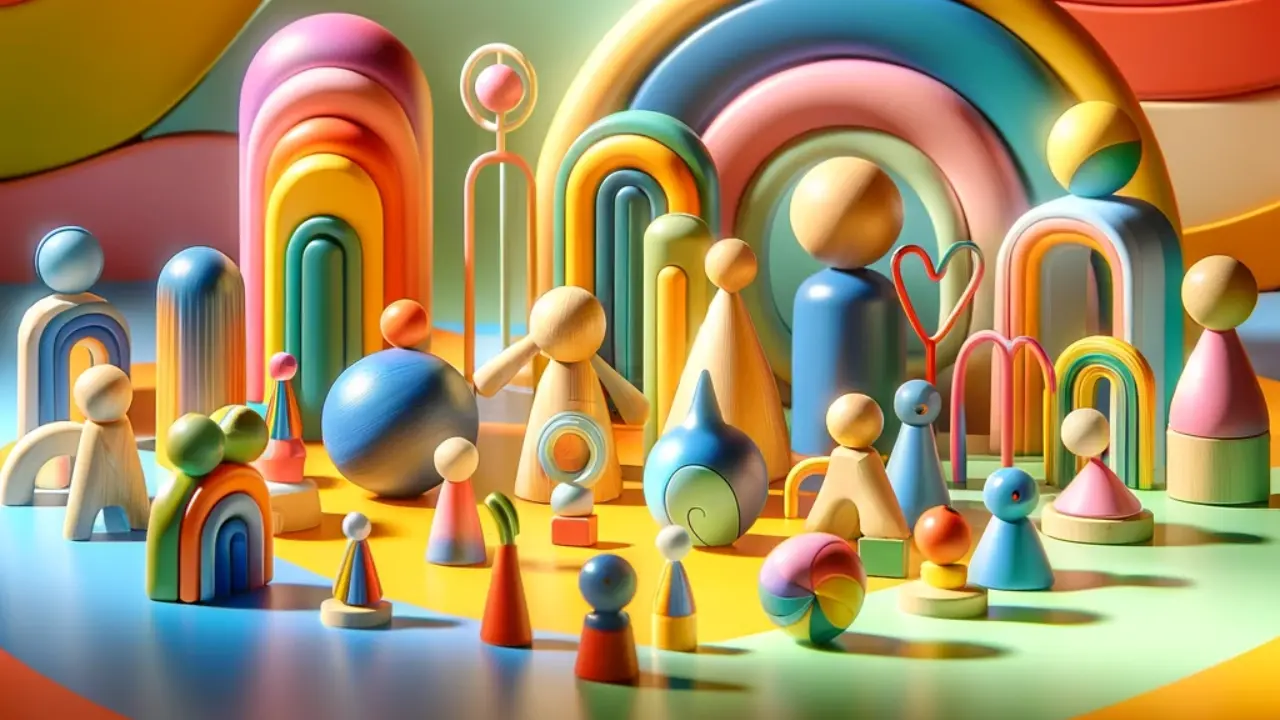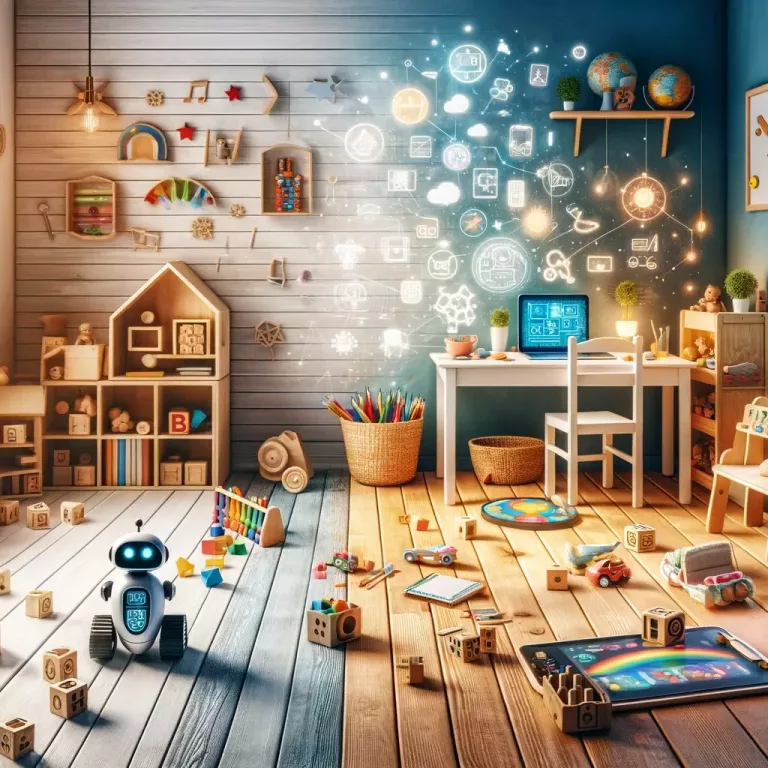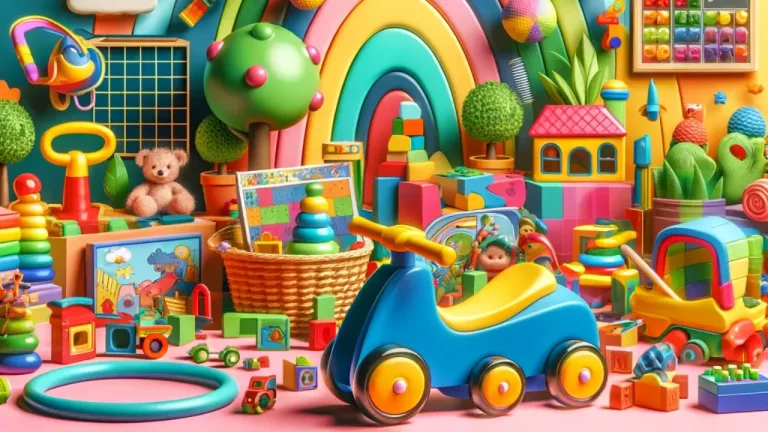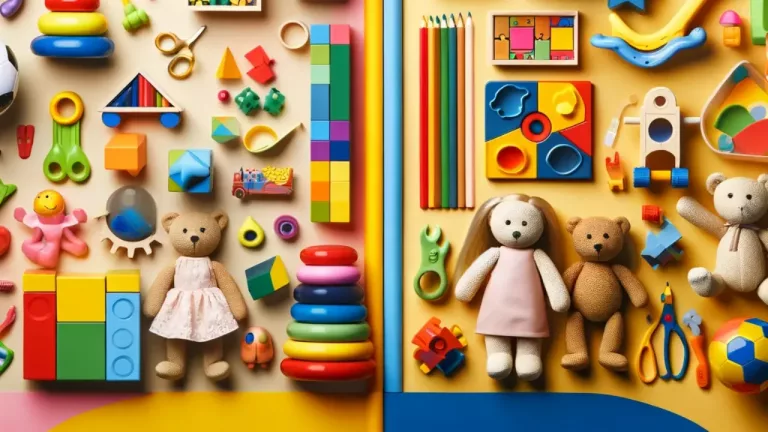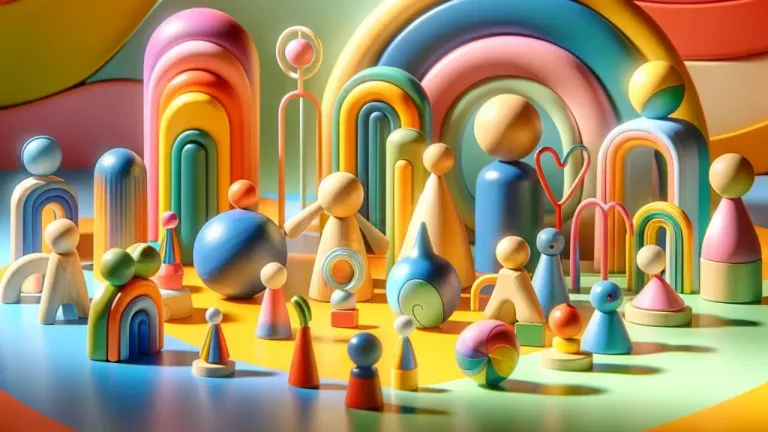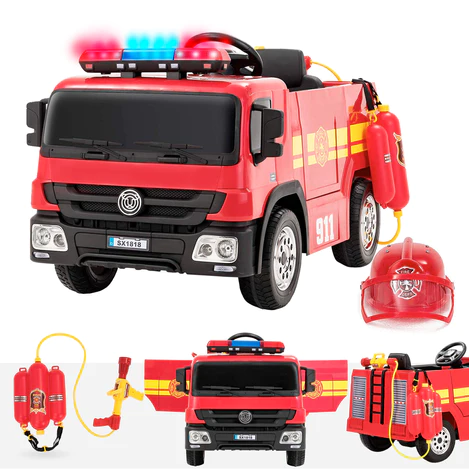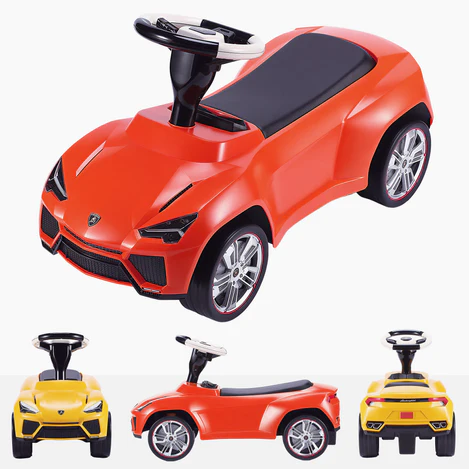The essence of childhood is creativity, an unbridled imagination that sees no limits.
In a world increasingly structured and digital, how do we keep this spark of creativity alive in our children?
The answer lies in something as simple yet profound as open-ended play figures.
These toys, devoid of rigid rules or specific outcomes, unlock a world of imaginative possibilities, essential for holistic child development.
Table of Contents
ToggleUnderstanding Open-Ended Play
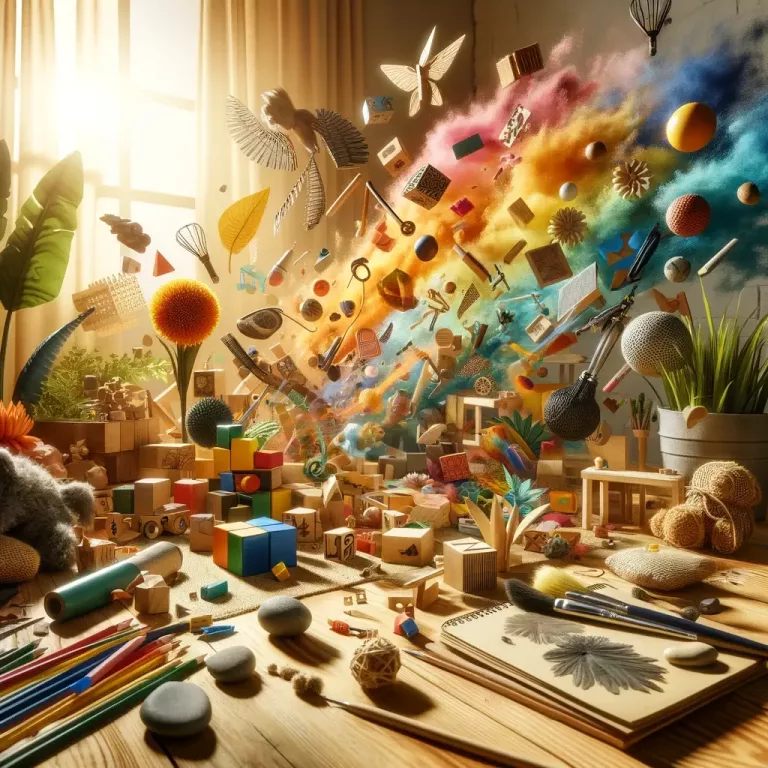
Delve into our article for an overview of UK toy industry trends and stats, spotlighting eco-friendly choices and STEM learning toys, as well as the move to online buying.
Tailored for those looking to keep up with the latest in the toy market.
What Exactly Is Open-Ended Play?
Open-ended play is a form of play that doesn’t have a predetermined outcome or way to ‘win.’ It’s about allowing children the freedom to explore, create, and imagine without limitations.
Unlike structured play, which often comes with specific instructions or objectives, open-ended play is spontaneous, led by the child’s own ideas and creativity.
The Benefits of Open-Ended Play
A Canvas for Creativity and Imagination
Why does open-ended play matter so much?
For starters, it’s a powerful catalyst for creativity.
When children engage with open-ended play figures, they’re not just playing; they’re authoring stories, crafting worlds, and breathing life into their imagination.
This kind of play isn’t just fun – it’s foundational in nurturing creative thinkers.
Thinking Critically, Solving Problems
Open-ended play is also a fantastic way to develop critical thinking and problem-solving skills.
Faced with a world of possibilities, children learn to make decisions, solve problems, and adapt their play as their narrative changes.
Developing Physical Skills
It’s not all about the mind, though.
Playing with open-ended toys like blocks or figurines also hones hand-eye coordination and fine motor skills.
These physical skills are as crucial as cognitive abilities in a child’s overall development.
Social Skills and Independence
When children play together with open-ended toys, they learn valuable social skills like sharing, negotiating, and working collaboratively.
These toys also promote independent play, encouraging children to trust in their abilities and ideas.
Exploring Open-Ended Toys
Unmarked Play People: A Blank Slate for Imagination
Consider unmarked play figures – simple, nondescript, and open to interpretation.
These toys are chameleons, becoming anything a child imagines them to be.
In their simplicity lies their strength; they are a blank slate for endless creativity.
Dolls: More Than Just a Toy
Dolls are a classic example of open-ended toys.
They encourage children to role-play, nurture, and create stories, building empathy and emotional intelligence along the way.
Animal Figurines: A Wild World of Possibilities
Animal figurines, from farm animals to mythical creatures, open up diverse scenarios for children to explore.
They can create jungles, farms, or entirely new worlds, allowing their imaginations to run wild.
The Role of Educational Toys in Open-Ended Play
In the realm of open-ended play, educational toys play a pivotal role.
They’re not just about learning numbers or letters; they’re tools for imaginative play.
Building blocks, for example, can be a castle, a spaceship, or a small city – the possibilities are endless.
Related: Discover 20 Smart Toy Shopping Ways to Make Every Pound Count
Incorporating Open-Ended Play in Daily Routines
To foster child development and cognitive development, incorporating open-ended activity toys into daily routines is essential.
Open-ended play is vital in nurturing creativity, imagination, and critical thinking in children.
Complementing Open-Ended Play with Soft Play Mattress Sets
A soft play mattress set provides a safe, comfortable space for children to explore and play.
It’s more than just a safety measure; it’s an invitation for children to jump, roll, and let their imaginations lead the way.
Easy-to-Implement Daily Play Ideas
Encourage daily open-ended activities, such as building imaginative worlds with foam blocks or creating stories with unstructured play figures.
These activities enhance storytelling, role-playing, and narrative development, crucial aspects of child-led activities.
Creating a Conducive Play Environment at Home
Motor Skills and Beyond
Designate play zones in the home that encourage exploration and playful learning. A corner with soft play mattress sets and cushions provides a safe learning environment for physical play, boosting motor skills and emotional regulation.
The Role of Adults in Open-Ended Play
Adult involvement in open-ended play, focusing on emotional expression and personal expression, is crucial. Adults should create a balance, ensuring safety in play while allowing children the flexibility to explore.
Guiding Without Directing: The Art of Facilitation
Facilitating open-ended play involves observing play patterns and encouraging critical thinking and problem-solving skills. This approach enhances child growth and independence, crucial for holistic development.
Observing and Understanding Children’s Play Patterns
Understanding children’s play patterns helps in selecting sustainable toys that promote cognitive development and emotional expression. Observing how children engage in constructive play and interactive play provides insights into their developmental needs and preferences.
Problem-Solving and Resilience
These toys also build resilience. When a tower falls or a story doesn’t work out, children learn to try again, developing an invaluable skill set for life’s many challenges.
Enhancing Language and Communication
As children narrate their play and interact with others, they develop essential language and communication skills.
This aspect of open-ended play is often overlooked but is vital in a child’s development.
Related: Open-Ended vs. Closed-Ended: Understanding the Play Value of Different Toys
The Social and Emotional Benefits of Open-Ended Play
Learning to Collaborate and Communicate
Open-ended play figures are more than just toys; they are tools for learning how to work with others.
Through play, children learn the art of negotiation, the importance of listening, and the joy of shared storytelling.
Building Confidence and Self-Esteem
There’s something incredibly empowering about creating a world of your own.
This empowerment is at the heart of open-ended play, helping to build a child’s confidence and self-esteem.
A Positive Attitude Towards Learning
Lastly, open-ended play fosters a positive attitude towards learning.
It turns learning into an adventure, not a chore, setting children up for a lifelong love of discovery.
Related: What are Stem Toys?
Conclusion
In conclusion, open-ended play figures are more than just toys; they are gateways to a world of creativity, learning, and development.
They encourage children to think, dream, and explore, providing a foundation for a lifetime of learning and growth.
As we nurture our children’s imagination, we’re not just playing; we’re preparing them for a future where creativity and innovation are key.
So let’s unleash their creativity, one open-ended play figure at a time.
FAQs For Unleashing Creativity with Open-Ended Play Figures
Open-ended play figures are ideal for children typically aged 3 to 8 years. This age range is crucial for cognitive and creative development, where children are most receptive to imaginative play. However, these toys can also be beneficial for slightly younger or older children, as they adapt to different developmental stages and individual needs.
Open-ended play figures are instrumental in a child’s emotional development by providing a creative outlet for expressing themselves. This form of play allows children to explore and articulate their emotions, fostering emotional intelligence and empathy. Additionally, engaging in imaginative play with these figures can be a stress-relieving activity, especially in structured learning environments. By creating their own stories and scenarios, children can release tension and manage stress, contributing to their overall emotional well-being.
Absolutely. Open-ended play figures can be seamlessly integrated into structured learning environments like preschools and kindergartens. They offer a balance to the structured curriculum, encouraging creative thinking and problem-solving skills. In these settings, they can be used to facilitate group activities that promote social interaction and cooperative play, enhancing the overall learning experience.
Certainly! Open-ended play figures offer a multitude of advantages for your child’s learning and intellectual development, making them an excellent choice for children with varying learning styles. These versatile toys accommodate visual, kinesthetic, and auditory learners, allowing each child to engage in a way that aligns with their individual learning preferences. Whether through visual imagination, hands-on manipulation, or storytelling, open-ended play figures cater to different learning styles, making them an inclusive tool for enhancing cognitive and creative skills in children.
